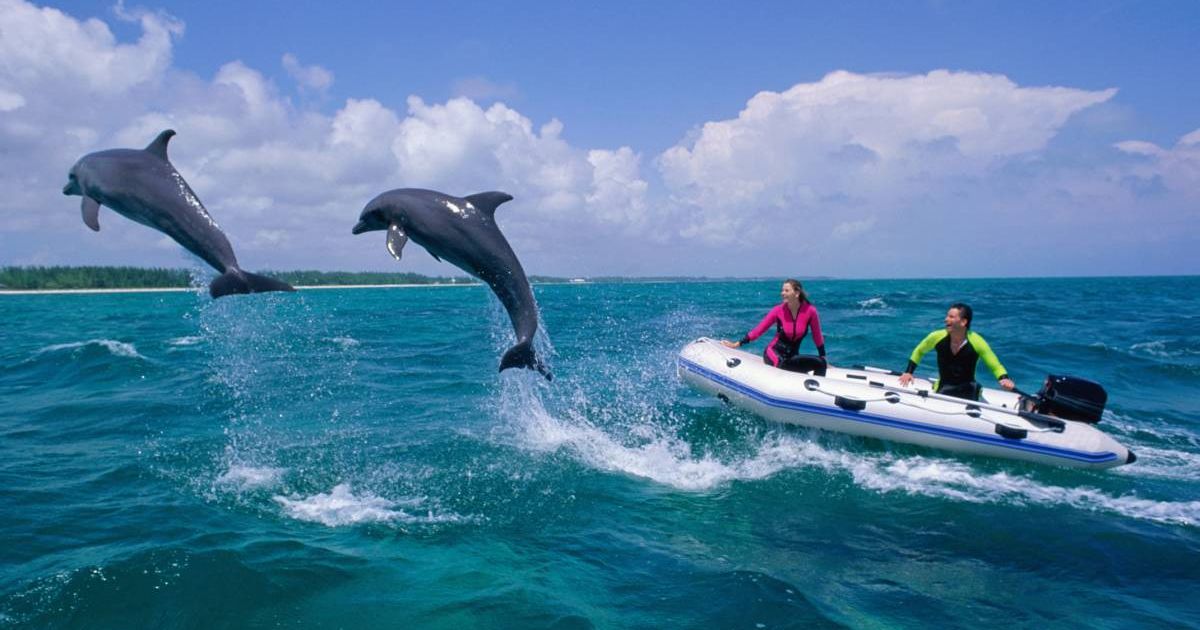Life Span of North Atlantic Female Dolphins Has Reduced by 7 Years — Researchers Finally Know Why

Dolphins across the world face a growing number of threats due to various reasons. While water pollution due to growing levels of plastic waste and toxic chemicals contaminates the waters they live in, other causes, like overfishing, deplete their food sources. Similarly, rising ocean temperatures due to climate change disrupt their communication and migration patterns. Recently, a group of scientists and researchers from the University of Colorado Boulder has raised concerns after finding out that dolphins, especially common female dolphins, in the North Atlantic region are now dying at much younger ages than was initially recorded.

After extensive research, scientists claimed that female common dolphins now live on average seven years shorter than they did in 1997 (from 24 years in the late 1990s to just 17 years now). Experts warn that this rapid decline is not just a threat to the dolphins but also to the ocean ecosystems. The findings of the research were revealed in a study titled, ‘Longevity Collapse in Dolphins: A Growing Conservation Concern in the Bay of Biscay,’ which was published in the journal Conservation Letters. Etienne Rouby, a researcher at the Institute of Arctic and Alpine Research (INSTAAR), spoke of the concerning situation and said, "There is an urgent need to manage the population better. Otherwise, there is a risk for decline and, ultimately, extinction."

As reported by Science Daily, the Bay of Biscay has long been one of the main winter hotspots for dolphins. It is located off the French coast, and it attracts the marine species as the nutrient-rich waters in the region house schools of anchovies, sardines, and other small fish that are a crucial part of dolphins' diet. However, what's concerning is that this same region is also one of Europe’s busiest fishing grounds. So, most of the time, when dolphins are not even the target, many are unintentionally caught in fishing gear. This process is termed 'bycatch,' which kills thousands of dolphins each year, unknowingly.

For instance, in 2021 alone, roughly 6,900 dolphins were killed. Despite these losses, earlier reports have suggested that dolphin numbers in the area had remained relatively stable. But now the situation is getting out of control. It has been observed that experts often estimate the dolphin numbers by counting them from ships and planes. But as they move a lot, this method can miss the population declines until the situation becomes severe. Therefore, to get a clearer picture, Rouby and his team studied dolphins that washed up dead on the shores and beaches. While they make up only about 10% of the total deaths, their patterns can reveal a lot about population trends. For this study, the team examined 759 stranded dolphins in the Bay of Biscay from 1997 to 2019, as reported by Fox41 Yakima.

Meanwhile, for marine animals like dolphins, which now reproduce far less due to shorter lifespans, recovery is hard once their populations drop. So, France has already begun shutting down fishing in the Bay of Biscay every January for a month to give dolphins a safer environment. While this has had positive effects, Rouby suggests that more efforts have to be made. Rouby also said, “As humans, we should make conscious decisions to protect the living and non-living things around us. Facing evidence of viability loss, we need to act before it is too late.”
More on Green Matters
Meet the Pink Dolphins Who Call the Amazon River Home
The Surprising Reasons Dolphins Are Dangerous to Humans — and Why You Should Never Swim With Them
Dolphins Are Among the Smartest in the Animal Kingdom — Here's Why